XHDATA D-109 Review
Many Short Wave listeners, DXers and professional travellers have invested in the XHDATA D-808 world band radio, which has attracted several positive reviews over the last two years or so. The D-808 -also marketed in some countries under the RADIOWOW brand – has become a popular shack companion, not least, perhaps, on account of its provision of Single Side Band (SSB; USB and LSB) reception.
Georg Wiessala
I too had used the D-808 model before, and we covered the radio, and the use of some potential homemade accessories with it.
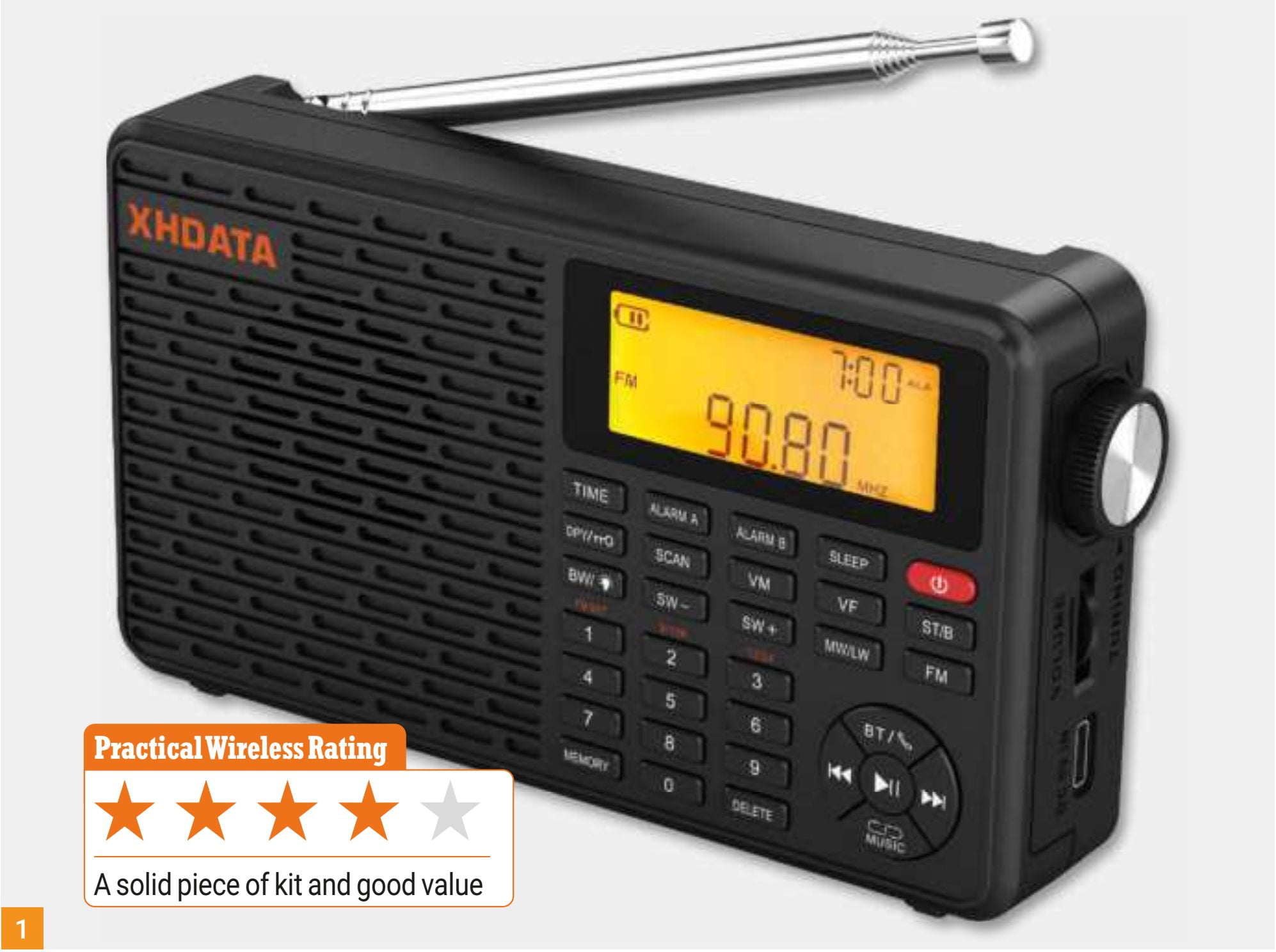
This XHDATA D-109 is a very nice touch for a radio of this size. Having said that, this facility appears to be becoming more standard now, with some other models, e.g. by Tecsun (PL990X, 501X), also offering this functionality. And so they jolly well should.
Scope of Delivery and Technical Details
Out of the box, the small portable (ca. 150 x 80 x 30mm) radio weighs in at a mere 288g. It comes with a short, leaflet-style, manual of 14 pages, a rechargeable battery (18650; 2000mAh, 3.7V 7.4Wh), a pre-attached carry strap, and a short USB charging cable. Some of the key technical details are summarised in Fig. 2. The manual is here.
The D-109 covers FM (in Stereo over Headphones, from 64MHz, if adjusted accordingly).
MW is up to 1710kHz. Tuning steps on LW are 9kHz, while on MW either 9 or 10kHz can be selected depending on where you are. Choose 9kHz for Europe. Selectivity for all frequency bands is indicated as 60dB, and there are 100 memory channels, for FM, LW and MW, as well as 300 for SW (Manual, pp. 13/4). This is more than enough I should think.
SW ranges from 1711 to 29999kHz and reception modes are FM and AM.
The simple telescopic antenna is ca. 530mm long. There is a small fold-out stand at the back.
Tuning and Other Functions The radio can be tuned by direct-frequency entry, without a ‘confirmation-key-press’. To get to Classic FM on FM, for example, press ‘1 -0-1 -1’; the final ‘1’ tunes directly to the station.
The XHDATA D-109 Multiband Radio and Bluetooth Music Player Georg Wiessala takes a closer look at a new world band radio from Chinese manufacturer XHDATA. This small receiver combines the advantages of a small travel portable with those of a Bluetooth speaker.
On SW, for instance, and after band selection, ‘1-5-5-9-0″ brings in China Radio International (CRI) straight away. You can, of course, use the tuning wheel (5kHz for SW), the SCAN key (scan-hold is 5 seconds) or the ‘SW-‘ and ‘SW+’ buttons to move about. It is all very intuitive and ergonomic. The ribbed, plastic, tuning wheel does not accelerate the tuning rate as you move it faster; nor did I expect that it would. The D-109 has a range of alarm, timer and sleep functions, as well as appropriate features for the populating and retrieval of memories. Still, it does not offer a recording function, despite the presence of an SD card slot. So, you cannot directly programme the device to record your favourite regular broadcast for later evaluation. For that, you would have to use your ingenuity and some external equipment.
I think it is a great shame that this functionality, which many DXers would use even as far back as the 1980s, with the most basic of radios/cassette recorders (I used a Grundig Satellit 500/700 for example) has not survived into the modern age, at least not in stand-alone, traditional radios. Why not add a ‘Record-to-SD-Now’ key? SDRs are a different matter altogether, of course.
The D-109 in Use
I used the XHDATA D-109 largely in the shack at home. It is easy to set up and enjoy in no time at all, and navigating the radio is intuitive. In terms of sound, the thumbwheel volume control produces more than enough volume to fill your room, and for outdoor listening too, if you are camping, touring, and so on.
FM stereo, with head/earphones (not included) at the external speaker output, is fine and full. I connected my favourite bhi passive external speaker and the little radio coped well, producing a nice sound.
Specification
| Radio Frequency Range | |
| • FM | 64-108 MHz / 76-108 MHz / 87-108 MHz / 87.5-108 MHz |
| • LW | 153-513 KHz (9K) |
| • MW | 522-1620 KHz (9K) / 520-1710 KHz (10K) |
| • SW | 1711-29999 KHz (5K) |
| Radio Noise Limiting Sensitivity | |
| • FM | (S/N=30dB): > 2 μV |
| • LW | (S/N=26dB): > 10mV/m |
| • MW | (S/N=26dB): > 1mV/m |
| • SW | (S/N=26dB): > 18 μV |
| Radio Selectivity | |
| • FM | 60dB |
| • LW | 60dB |
| • MW | 60dB |
| • SW | 60dB |
| Memory Radio Frequency | |
| • FM | 100 pcs |
| • LW | 100 pcs |
| • MW | 100 pcs |
| • SW | 300 pcs |
| Maximum Output Power | 2.0W |
| Headphone Impedance | 16-32Ω |
| Speaker Specification | 40mm (dual NdFeB 16 core) 4 ohm / 5W |
| TF Card Support | 32 GB (Not included) |
| Audio Playback Format | MP3 / WMA / WAV / FLAC |
| Bluetooth Transmission Distance | 10M |
| DC | 3.7V (18650) 2000mAh |
| DC5V IN | DC5V / 1000mA |
| Contact Information | |
| • Skype | radiwow |
| [email protected] | |
| XHDATA |
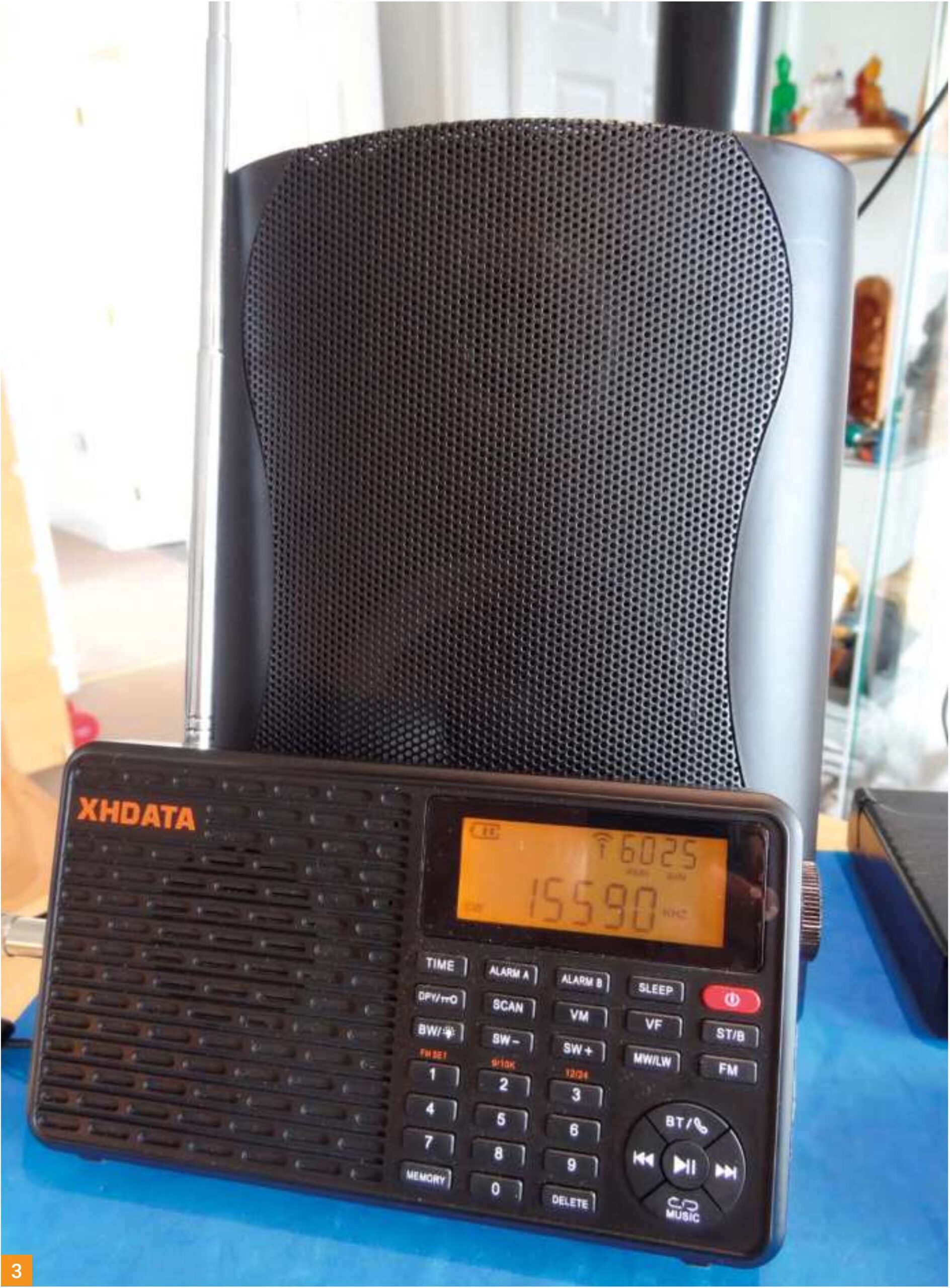
I have said this before, but I’ll say it again in case you missed it – any such small portable radio, if operated at home, will have its sound augmented if you use an active, noise-cancelling or even a suitable passive, external speaker, and the D-109 is no exception.
The same goes for antennas too. The built-in (small-ish) telescopic is OK, but the antenna cannot be brought into a fully vertical position when the radio is on its stand. With just the telescopic, the sensitivity of the radio ranges from acceptable to good. For instance, on the telescopic antenna, the D-109 brought in some of the stronger daytime Short-Wave stations (e.g. CRI, 15590kHz; Fig. 3); there were many more after dark and out-of-doors, of course.
When you connect an external antenna to this radio, the internal one is automatically switched down.
I also connected a random length of long wire, terminating in one of the brilliant R.E.C. Electronics baluns made by Keith Rawlings (and Fig. 4):
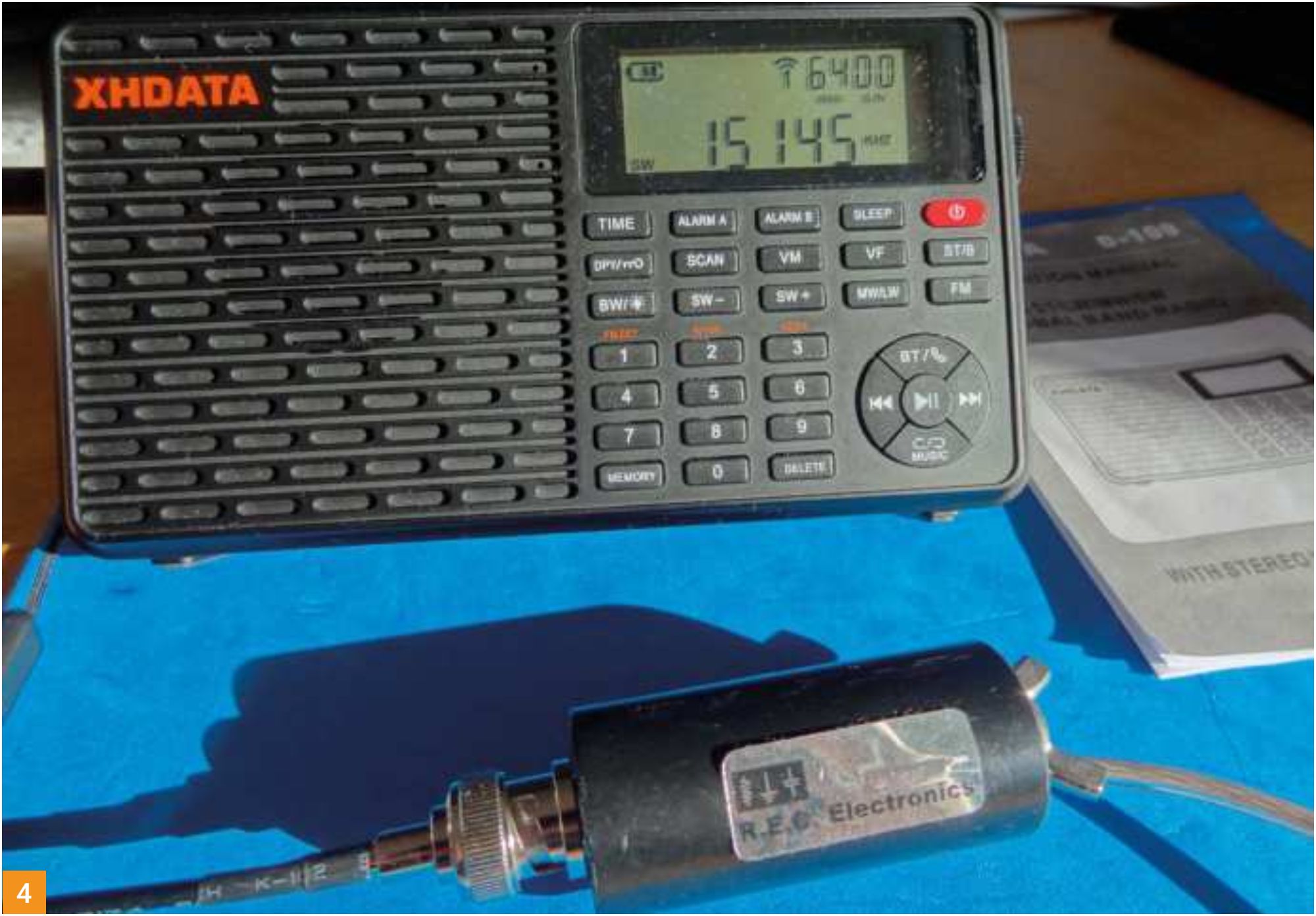
Doing this, I enjoyed a remarkably clear reception of Adventist World Radio (AWR) Africa on 15145 in French, a station I do not often get during the day here, Fig. 4 again.
I will now take the wire and balun with me on any travels since the improvement over the telescopic is significant.
Fun with External Antennas
I also still have the Cross Country Wireless (CCW) Double-Loop Active Antenna here, which I reviewed. The XHDATA D-109 had no problems with that, Fig. 5.
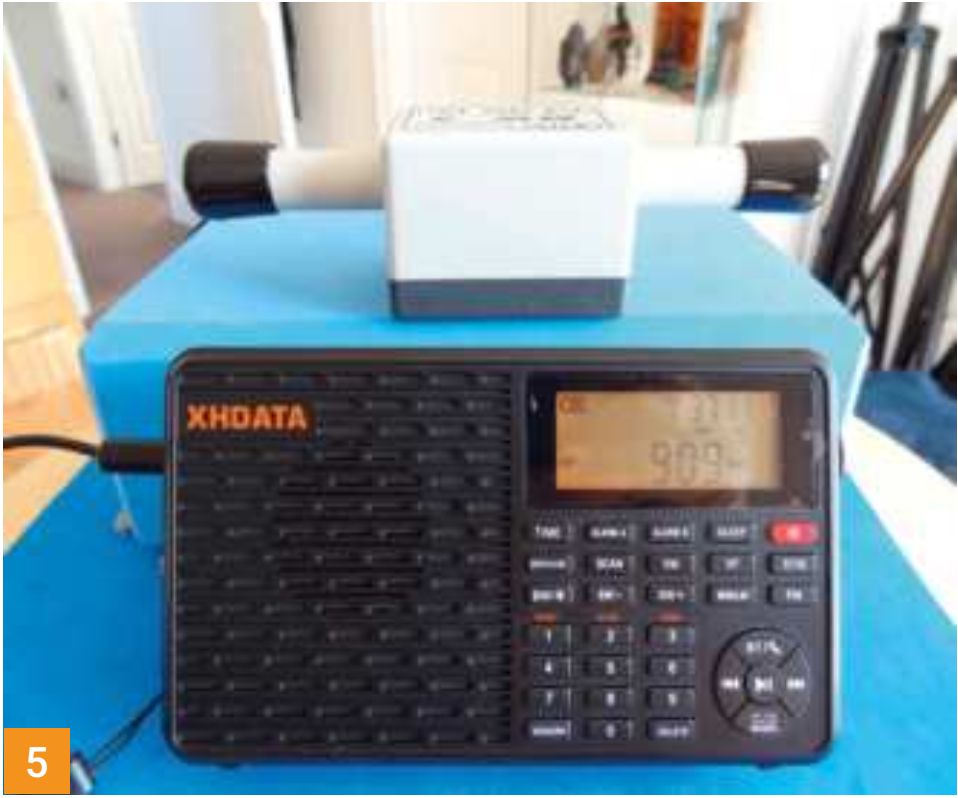
Using some older, and more specialised gear, such as my Grahn Spezialantennen Magnetic Ferrite Bar Antennas, Medium Wave reception was acceptable but not outstanding (The antenna in Fig. 6 is the MW-3,850-4000kHz model). Here, the XHDATA D-109’s inbuilt ferrite won the day; this radio could well make a good little MW DXers companion.
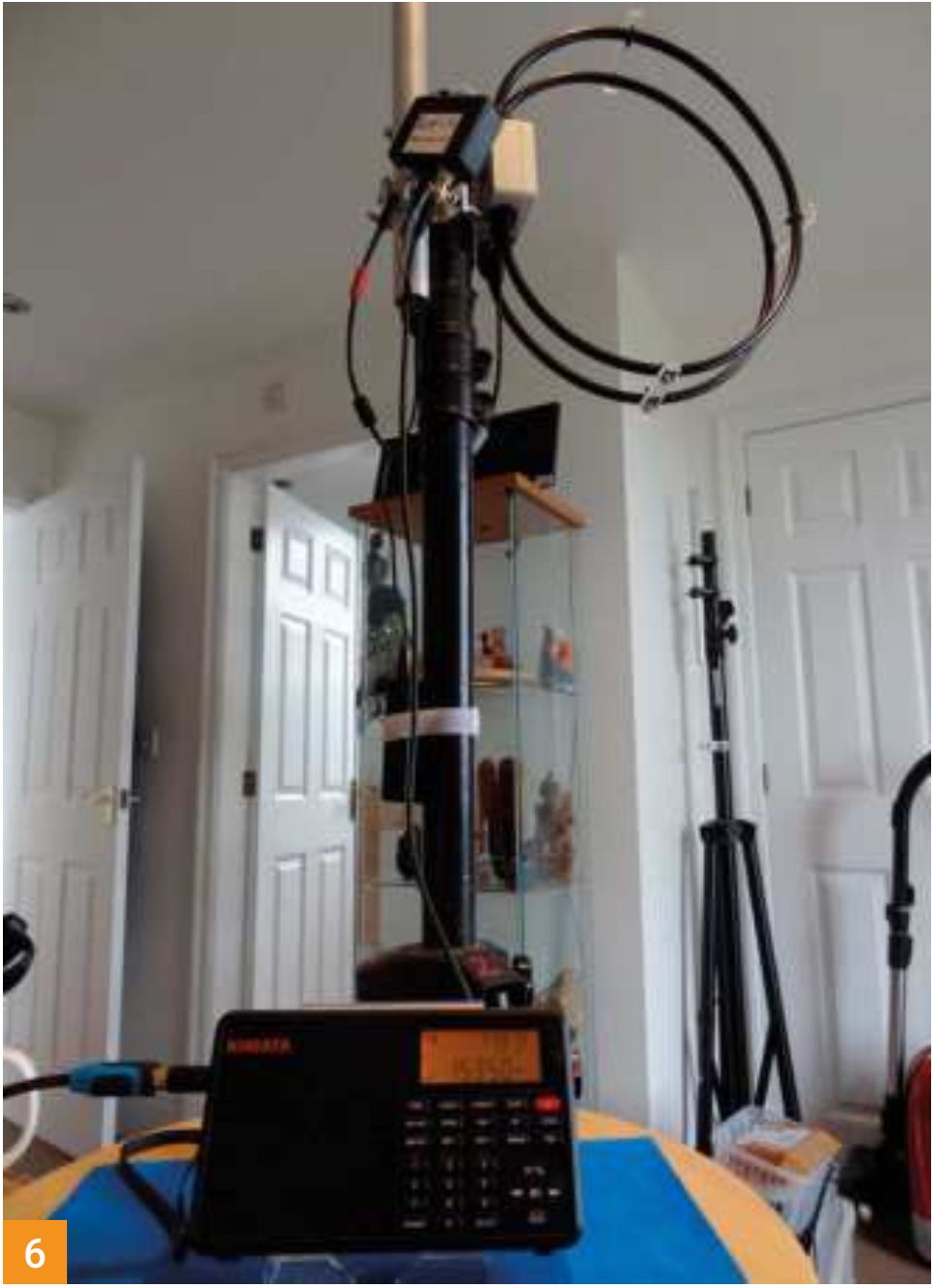
Overall, if you can hitch up some kind of external antenna, you will be rewarded with enhanced performance.
In other areas, it is the small things that matter. For instance, I did like the fact that you keep the display light on permanently. The bandwidth switch gives you reasonable control over selectivity, appropriate to the purpose of the radio (1,2,3,4, and 6kHz). There is no AFC or SYNC.
The case is made of hard plastic. No environmental credentials here, but a solid enough shell to protect the radio; this inspires confidence that it may well withstand the occasional ‘impact-assessment test’ (i.e. fall from a great height).
What is nice about this radio is that you can insert a mini-SD card (‘TF Card’) to play your files. Moreover, with the Bluetooth feature, you transform this radio into a small Bluetooth speaker, which can be controlled from your phone, Fig. 7. You cannot, however, stream from the radio back to your external Bluetooth device.
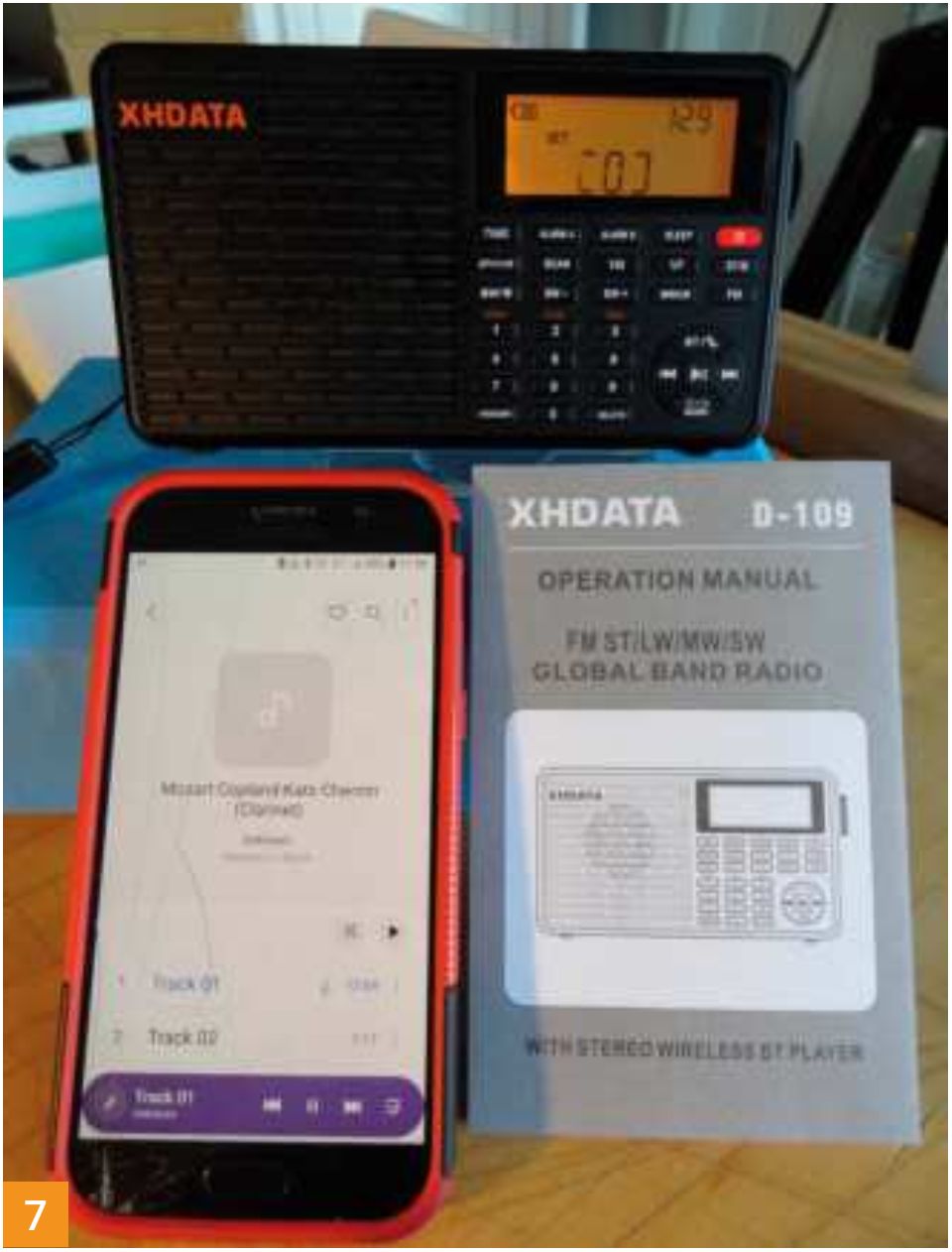
Notwithstanding this, the D-109 makes for a nifty little mini-HiFi setup on your travels – a thoughtful touch from the engineers at XHDATA (see also below, in italics).
In Conclusion
The XHDATA D-109 is a solid little radio of an overall good build. It feels more robust than some of its competitors of the same size. The pocket receiver will appeal to many mobile users and travellers, and those looking, perhaps, for a secondary portable shack radio for HF.
I found that it worked very well and had a good, strong sound, on its own or with external speakers. The bandwidth selection on offer works well on AM, and I liked the MP3 Player and Bluetooth Speaker abilities a lot, they render the radio much more versatile.
The telescopic antenna cannot be brought into a vertical position, but this is a small niggle, there are very few radios in this class which allow you to do this.
The lack of a record-to-SD card facility, in my opinion, weighs more heavily, why have a microSD card slot when you can only make use of it for playback?
There is no SSB, AFC or SYNC, and radio mutes when (fast) tuning.
I raised some of the issues above with XHDATA in China and received – within less than 24 hours – the following additional comments (edited excerpts):
“(1) The D-109 is equipped with a Bluetooth transmitter, which can be used as a Bluetooth speaker, but it cannot be used as a device to connect to a Bluetooth headset, only wired headsets can be used.
(2) At present, [the] D-109 does not have a recording function, so the operation you mentioned cannot be achieved, but the suggestion you mentioned is a very good idea, and we have already fed back to our engineers. If possible, this function will be added to future models.
(3) The D-109 does not have SSB, but both D-808 and D-109 have an AFC function because we use a DSP chip, which can complete this function inside the chip, unlike the analogue machines a few years ago that need external processing.
[…] It will automatically mute when the SW is performing quick tuning to avoid annoying noises for users.”
Altogether, the XHDATA D109 represents good value for money. Like all such radios, the astute use of accessories, such as external speakers and antennas, improves matters noticeably, but on its own, much fun can be had with this little receiver. Sensitivity and selectivity on SW range from adequate to good.
When you purchase through links on our site, I may earn an affiliate commission. Here’s how it works.



Thanks indeed for in-depth review of Xhdata D-109. I am from Pune, India and SW listening is becoming my hobby now a days ! I really appreciate your efforts and suggestions in this review – which will definitely help for new SW listeners like me ( I don’t have any technical knowledge about radios but I love to tune the farthest stations for sure !).
Best Regards,
Ramesh